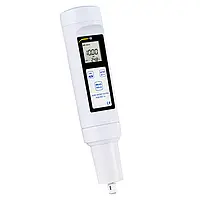
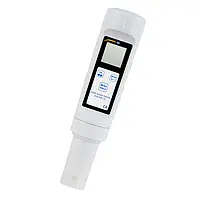
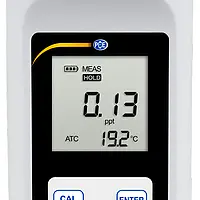
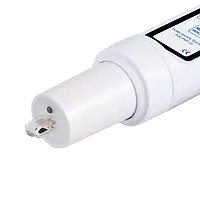
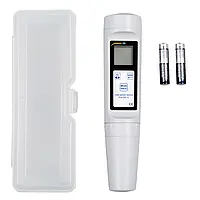
pocket size conductivity tester / for ultrapure water / smallest measuring range 20 µS/cm / salinity measurement / temperature compensation up to 60 °C
The salt meter is a good solution for anyone who wants to check the conductivity of ultrapure water.
This salt meter is a compact device with an integrated temperature sensor for optimum temperature compensation.
Among other things, the salt meter has a very low measuring range of only 0 ... 20 μS / cm.
Furthermore, the salt meter is able to accurately determine the salinity of liquids.
The salt meter has an automatic temperature compensation in the range of 0 ... 60 ° C.
The calibration of the salt meter is carried out via a three-point calibration.
Water that is usually supplied into the taps for human consumption is transparent and reminds a usual liquid. Though, sometimes, the consumers may notice a strong unpleasant smell, strange metal aftertaste, the change in color or water qualities, when the soap seems to be impossible to wash off the hands and vice versa, when the soap does not lather at all, sometimes water gets a sediment if some amount of it is left still in a glass for a few days or the kettle gets a white limescale just after a few days of exploitation. All these may be the indications that the water has not gone through the correct treatment process and has not been filtered and purified appropriately. Before we get water in the pipes of our households, it undergoes a serious process, during which it should be checked and devoid of any substances that might have negative impact on the health.
Besides such important value as pH (activity of hydrogen ions), that should be checked along with the other parameters, there is also such a notion as the level of TDS, or totally dissolved solids / substances. 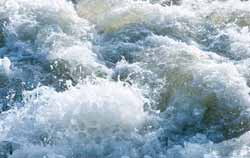
One of the stages of water purification is desalting. Separation of salt is a necessary process and can be carried out also with the help of the membranes. The latter are a part of both, electrodialysis and reverse osmosis (it should be fairly noted that, besides these process, there have been many other, but they turned out to be less efficient). Though, the purpose is the same, the principle of these process is different. Reverse osmosis is a successor of electrodialysis and if the latter uses electrical current, the former is based on pressure. For desalting of water also forward osmosis may be applied, which helps to separate the dissolved solutes from the water. There have been long debates as for which type of osmosis is better. Both methods are aimed at improving the water quality, though the operating principles differ, since pretty high pressure if used for Ro, and low for FO. FO has been applied for beverages production.
Due to the development of desalination process, even sea water may be turned into potable, though, of course, it is a more cost and energy consuming process if to compare with fresh water, where it goes about purification.
Ability to purify water has brought an incredible contribution into various spheres of life, not only technology and industry. It significantly improves many processes, helps to preserve equipment in a better condition (without excessive corrosions and limescale), it helps in agriculture and irrigation, and of course, it provides people with pure and healthy drinking water.
| Conductivity measuring range | 0 ... 20 µS/cm 0 ... 200 µS/cm 0 ... 2000 µS/cm 0 ... 20.00 mS/cm |
| Resolution | 0.01 / 0.1 / 1 |
| Accuracy | ± 1 % of measuring range |
| Salinity measuring range | 0.00 ... 10.00 ppt |
| Resolution | 0.01 ppt |
| Accuracy | ± 1 % of measuring range |
| Temperature measuring range | 0 ... 60 °C / 32 ... 140 °F |
| Resolution | 0.1 °C |
| Accuracy | ± 1 °C |
| Temperature compensation range | 0 ... 60 °C / 32 ... 140 °F |
| Temperature coefficient | 2 % / °C |
| Number of calibration points | 1 ... 3 |
| Calibration points | 84 µS/cm 1413 µS/cm 12.88 mS/cm |
| Cell constant | K=1 |
| Normal media temperature | 25 °C / 77 °F |
| Hold function | By pressing a button |
| Automatic shutdown | 8 minutes after the last key press |
| Pause | Reset to factory setting possible |
| Power supply | 2 x 1.5 V AAA batteries |
| Operating time | ca. 200 hours |
| Dimensions | 185 x 40 mm / 7.2 x 1.5" |
| Weight | ca. 100 g / 3.5 oz |